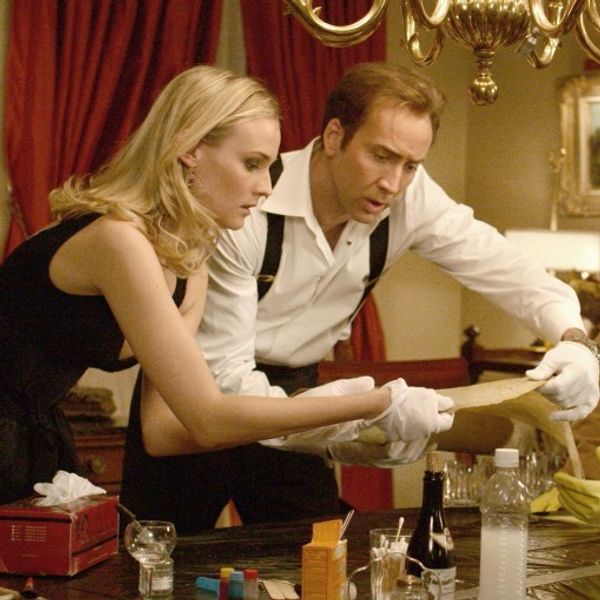Discount Code: Take This Screenwriting Class Through Real Ideas Studio
Want to learn the basics of screenwriting over a 10-week course?

Have a great idea for a movie that's burning inside you? Are you interested in a career writing movies in Hollywood? Well, non-profit organization Real Ideas Studio is orchestrating a 10-week screenwriting course to help you get your ideas off the ground.
And yours truly will be teaching the course.
For those of you who don't know, I'm a Black List writer who's had one movie produced and sold and optioned several ideas across film and television. I've teamed up with Real Ideas Studio to help them raise money for their educational programs. They are a 501(c)3 non-profit organization seeking to redefine “real-world experience” as a global collaborative through cultural immersion within mentored creative arts programs. Their flagship program is a hands-on trip to the Cannes Film Festival where students write, shoot, and edit short films set around the festival and screen them at the venue, all while getting to attend premieres and other events.
The goal of this course is to learn the essential elements of screenwriting. These include story, characterization, dramatic structure, cinematic language, and dialogue. I will also coach writers through the first draft of their screenplays.
At the end of the 10 weeks, you should have a feature film written. And I'll be there every step of the way to provide feedback and story ideas.
What Will You Learn?
Week One: Ideation, Creation, Characters, and Conflict
- Screenplay format overview
- We’ll learn about loglines, outlines, and genre
- What makes for an interesting character?
Week Two: Opening Scenes, Character Intros, and the First 10 Pages
- How can you hook the reader right away?
- How does your reader identify the genre?
- What are some ways to meet your characters?
Week Three: First Acts and Worldbuilding
- What should happen in the first 30 pages of your story?
- How can we tell if the first act is humming?
- Does the audience understand the world?
Week Four: Breaking into Two and B stories
- Learn how to get your characters into more trouble and ease the audience deeper into the story.
- How can B stories aid the A story?
- Execute plant and payoffs.
Week Five: Second Acts and Embracing the Genre
- What tropes or expectations will the audience have?
- Learn how to make original ideas of familiar beats.
Week Six: The Midpoint and Beyond
- Pivot your characters and story from where they were
- Surprise your audience for where the story can go
- Get through pages 50-75
Week Seven: Third Acts
- What are some key beats the story should hit?
- How can you begin to wrap up storylines
- Pay off the things you planted.
Week Eight: Wrapping Up Your Movie
- How do all the plotlines converge?
- What does a solid character arc look like?
- Wind down your script without losing momentum.
Week Nine: The Ending Scenes
- What does the audience expect out of an ending scene?
- Is there room for a sequel?
- Hint where the story could go.
Week Ten: Rewrites and Finding Representation
- How do you tackle rewriting your own work?
- What can you do with your script when it’s done?
- Are query letters worth it?
The Details
This course consists of one live virtual class session per week to give students time to work on their screenplay in between sessions. Each session will last between roughly 1.5 and 2 hours, starting with a brief brainstorming/film discussion to open each class, followed by the day’s lesson, guiding students step by step through the writing process, and finishing with a question and answer portion.
Enrolled students will start a new screenplay with the goal of finishing a draft by the end of the 10 weekly sessions.
DATES: June 6-Aug. 8
ADMISSIONS
- Class Size: 20 students
- Level: Beginner to Intermediate, either at the beginning of your writing career, or writers who have been writing for a while but feel they could use a new perspective on the process.
- Age: 18+
TUITION & FEES: 10-Week Online Course, $500.00 USD
Use the Code CATALYST is the code for 20% off!!!!
- Class session links will be emailed ahead of each session.
- Free Cancelation within 24 hours of the end of the first session.















